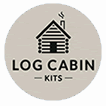Blog
Call Now 01342 477774
Adding Electric Heating to Your Garden Log Cabin: A Comprehensive Guide
Log Cabin Kits
Enhancing Comfort in Your Garden Log Cabin
Transforming your garden log cabin into a comfortable retreat requires careful consideration of heating options, especially during colder months. Electric heating offers a convenient and efficient solution for maintaining warmth and cosiness in your cabin throughout the year. In this guide, we’ll walk you through the process of adding electric heating to your garden log cabin, ensuring a snug and inviting environment for relaxation and enjoyment.
1. Assessing Your Heating Needs
Before embarking on the installation of electric heating in your garden log cabin, it’s essential to assess your heating needs. Consider factors such as the size of your cabin, insulation levels, and local climate conditions to determine the most suitable heating solution. Evaluate the layout and usage of your cabin to identify areas that require heating and any specific requirements for comfort and functionality.
2. Choosing the Right Heating System
Electric heating systems come in various forms, each offering unique advantages and suitability for different applications. Common options include electric radiators, underfloor heating, fan heaters, and infrared panels. Evaluate the pros and cons of each type of heating system in relation to your cabin’s size, layout, and heating requirements. Consider factors such as energy efficiency, heat output, installation complexity, and cost to select the most appropriate heating solution for your garden log cabin.
3. Planning the Installation Process
Once you’ve chosen the right heating system for your garden log cabin, it’s time to plan the installation process. Start by determining the optimal location for installing heating units or fixtures, taking into account factors such as accessibility, aesthetics, and heat distribution. Consider the placement of electrical outlets, wiring routes, and control mechanisms to ensure safe and efficient operation of the heating system. If necessary, consult with a qualified electrician to assess the feasibility of your installation plan and obtain professional guidance.
4. Installing Heating Units or Fixtures
With your installation plan in place, proceed to install the heating units or fixtures in your garden log cabin according to manufacturer instructions and industry best practices. Follow safety guidelines and regulations to ensure compliance with electrical codes and standards. For electric radiators or heaters, mount them securely to the wall or ceiling in desired locations, ensuring proper spacing and clearance from combustible materials. For underfloor heating systems, lay out heating mats or cables beneath the flooring substrate, taking care to achieve even coverage and proper insulation.
5. Testing and Commissioning
Once the heating units or fixtures are installed, test the system to ensure proper operation and functionality. Check for any wiring faults, overheating issues, or performance discrepancies that may require adjustment or troubleshooting. Verify that temperature controls, timers, and thermostats are set correctly to maintain desired comfort levels in your garden log cabin. Conduct regular maintenance checks and inspections to keep your electric heating system in optimal condition and address any issues promptly.
6. Optimising Energy Efficiency
To maximise energy efficiency and minimise heating costs in your garden log cabin, implement strategies to optimise heat retention and insulation. Ensure that windows, doors, and other openings are properly sealed to prevent heat loss and draughts. Consider installing additional insulation in walls, floors, and ceilings to enhance thermal efficiency. Use programmable thermostats and timers to regulate heating levels and adjust temperature settings based on occupancy patterns and usage requirements. By implementing these energy-saving measures, you can enjoy a comfortable and cost-effective heating solution in your garden log cabin.
Conclusion: Enjoy Year-Round Comfort in Your Garden Log Cabin
In conclusion, adding electric heating to your garden log cabin is a practical and straightforward process that can significantly enhance comfort and enjoyment in your outdoor retreat. By assessing your heating needs, choosing the right heating system, planning the installation process, and ensuring proper testing and maintenance, you can create a warm and cosy environment for relaxation and entertainment throughout the year. With careful consideration of energy efficiency and insulation, you can also minimise heating costs and environmental impact, making electric heating a sustainable and economical choice for your garden log cabin. So don’t let the cold weather deter you—install electric heating in your garden log cabin and enjoy year-round comfort in your outdoor sanctuary.
